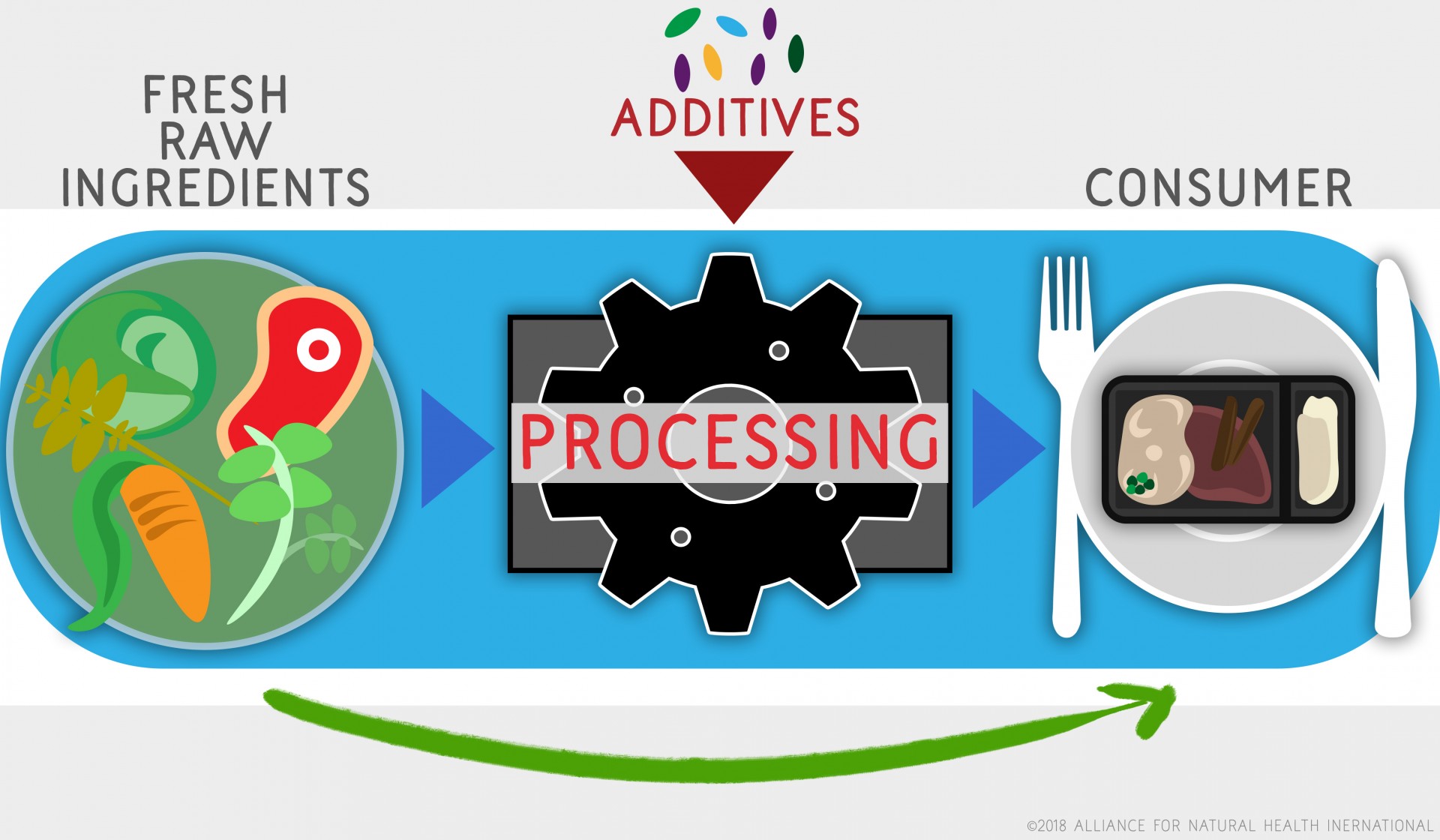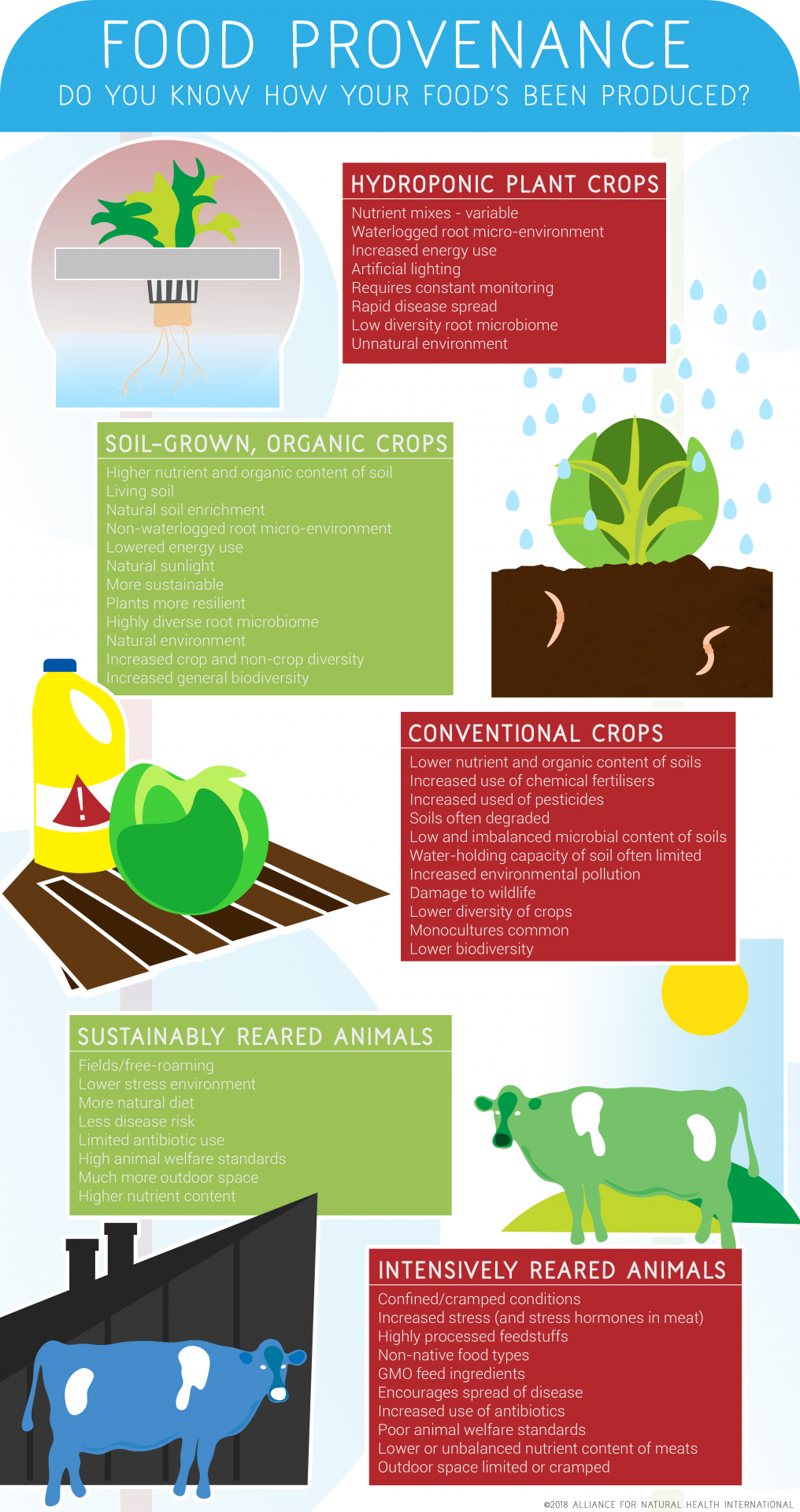Content Sections
Do you know (or think about) where your food comes from? Do you know what country or region it originates from? Do you know if all the ingredients in it come from one place – or many? If it’s been subject to processing, where did that happen? Should you care?
Although food manufacturers might have us believe otherwise, food doesn’t just magically appear on supermarket shelves, in groceries, butchers or fishmongers. It comes from somewhere (and that's rarely the place you've bought it). More often than not, especially for supermarket produce, there's a complex supply chain involving multiple locations that is far from transparent. For some types of specialty foods, food provenance is clearly indicated in their marketing to help elevate a food’s status compared to those lacking such transparency.
In reality, most people think all that’s needed is to know the country of origin or place of a food’s manufacture. This is after all the only mandatory requirement relating to provenance for most foods, as evidenced by EU law in Articles 9(1)(i) and 26 of the Food Information for Consumers Regulation.
But what can be just as, or even more, important, is where and how our plant foods are grown, where and how our animal (including fish) foods are raised, and of course, where the ingredients in the ever-increasing amounts of multi-ingredient processed foods come from and where and how they’re processed. For many, this is the part of the supply chain that resembles a black, or at least deeply opaque, box.
In most cases, especially for foods not certified as organic, the food supply chain is far from transparent. Poor quality, nutritionally degraded ingredients often of unknown origin, contaminants, artificial ingredients and over-processing now make a significant contribution to morbidity in modern societies. As the food supply is increasingly globalised and commoditised, with healthcare systems buckling under the burden of largely preventable diseases, there’s never been a more important time to make the food supply chain transparent.
As major corporations shamelessly exploit society’s desire for low cost food, increasing globalisation and industrialisation of our food production systems have caused many to lose touch with traditional foods and farming methods. These hold the key to sustainable agro-ecosystems and resilient, sustainable healthcare. The best chance we have to avoid losing these systems to extinction is to maintain consumer demand for them. Box schemes, community supported agriculture schemes, farmers’ markets, food cooperatives and the farm gate still represent among the best ways of us getting our food, these channels generally emphasising local, regional, sustainable and often organic.
Our food is only as good as the food it eats!
Nature designed plants to grow in soil and cows to eat grass. It's part of a trophic system involving plants, animals, soil, water, microorganisms and sunshine for millennia. The facts of the matter are, the majority of salad veg most people buy from supermarkets today has never seen a grain of soil – most being grown hydroponically. Most beef cattle and farmed fish are fed GMO maize, other grains and soya that are alien to their evolutionary history. The animals are raised under such intense conditions with inadequate nutrition that the animals’ immune systems are no longer able to do their thing – with antibiotics being routinely used in an effort to avoid the rampant spread of disease.
If a fruit or vegetable is grown in damaged or degraded soil low in organic matter and microorganisms, or in a less-than-ideal hydroponic system, it is likely to contain lower levels of phytochemicals than those grown in soils rich in nutrients and mycorrhizal fungi. The same principle applies to intensively reared animals that become stressed and unhappy in systems designed to produce the maximum yield at the lowest possible cost. Stress hormones flood the meat, which already contains a less than ideal essential fatty acid ratio impacting negatively on our bodies when we consume it.
The true cost of our food
We are becoming more and more disconnected from the sources of our food as producers or suppliers are often trying to find the quickest, cheapest way to produce what we eat and gain the maximum return. For most people, the food is produced or processed a great distance away from the point of consumption. That's part of globalisation and it is catalysed by high demand for cheap food and an ever growing world population needing to be fed.
Rather than seeking fresh raw ingredients, we have become reliant on multiple ingredients from unknown sources being highly processed before they even reach us. A quick trip to the supermarket (or takeaway) provides neat little packets, tins and packages of what now passes for food. Many of which are laden with carcinogenic heterocyclic amines, pro-inflammatory advanced glycation end (AGE) products and multiple additives designed to prolong shelf-life and replicate the taste of the original raw foods.

It’s true many people appear unconcerned over how their food is produced, where it comes from or its nutrient value. Massive marketing budgets are expended on trying to convince us that major food producers are supplying us with food that’s ‘healthy’ and isn’t damaging the environment. This clever marketing is intended to wrap us in a warm glow of ignorance and insulate us against the reality of our industrialised food production systems.
But, you only have to look at the crisis many healthcare systems around the world are now facing alongside the significant increase in chronic disease, to see the impact of this. And it’s not just our health that’s being affected:
- Overuse of water in areas of scarcity are leading to water poverty
- Overfishing is pushing fish stocks to the point of collapse and impacting on local fishing communities
- Globalisation of our food supply is seriously and negatively impacting the environment, increasing poverty among food producers and increasing dependence on the big agrifood conglomerates
- Loss of natural habit and biodiversity from land clearance for farming/agriculture along with high use of pesticides and herbicides
- High use of antibiotics driving the development of antibiotic resistant bacteria in animals, which can pass to humans
- Increased food miles as food is grown and shipped globally
- Environmental damage, pollution and nutrient depletion from chemical fertiliser and pesticide use
- Plants and insects increasingly developing resistance to the chemicals designed to control/kill them
In order to sustain a healthy human population in the future we need to nurture and maintain sustainable, local/regional agroecological farming systems. Put simply - food is life, and living food, or food that was recently living, helps to sustain life. Another simple principle that is sometimes obscured by the non-transparent nature of the supermarket supply chain is that if the plants and animals we consume are themselves healthy we, the consumers, are also more likely to be healthy!
Take control of your food supply
- Order a weekly vegetable, fruit and/or meat box containing soil-grown plant foods that are locally or regionally sourced
- Help to protect your family from pesticides. Find out which foods are best to buy organic because they avoid potentially harmful residue levels
- As far as possible source your foods from local producers to cut the distance your food has to travel and help you to eat seasonally
- Follow our Food4Health guidelines to help you consume a diverse, nutrient rich diet
- Select restaurants, where possible, that are clear about the provenance of their foods
- Avoid supermarket foods that are non-transparent over the provenance of foods
- Avoid multi-ingredient products where it is unclear where the ingredients originate from
- Download a copy of the ANH-Intl ‘Top 10 tips to help you Eat Your Way to Better Health’








Comments
your voice counts
11 January 2018 at 11:10 am
The best way to obtain traditionally grown and raised food is to grow it yourself! Ok, it's pretty hard to grow and raise everything, but everyone can grow something!
Big Agra, Big Food & Big Chema have no interest in our health or the health of the Planet, only profits, and the sooner people realise this the better. Also, they will have no scruples in buying up traditional/organic growers/companies (like KerryGold and Pukka) pretending they are interested in health and then changing production over to suit their own money/shareholder focused ways. And, sadly it seems, that the sellers of these companies will also have no scruples selling them on when it comes to making an income/profit for their retirement.
We know the soils are raped/deplete, the air and seas are contaminated but will we as a species do anything about it? There is a lot of talk/discussion, a lot of frustration, a lot of positivity, but where is the ACTION. IF WE POISON THE EARTH, WE POISON OURSELVES!!! What can make us (as a species) change? Not enough people are listening, not enough realise how close we are to the edge of no return. Personally I don't care for me (Im in later life) but I do care for my child and his children and their future generations, and I care immensely for the World/Planet. So in one way I think the best solution is to get rid of the worst parasite, and yes, thats us - the human parasite. Unless of course we wake up and ALL do our bit to make changes and clean our planet and our mind, body and soul up! It is all connected. I love a good rant. Great article by the way, it should be mandatory reading!
13 January 2018 at 4:14 pm
Our top tips for a healthier, longer life? Number 1: Remove chlorine/chlorination by-products from mains tap water before consumption - chlorine contains ZERO health benefits for humans or animals. Number 2: Remove 'sweet-treats' and so called 'energy drinks' from the shopping basket. Record numbers of young children are being admitted to hospital for removal of rotting teeth ... unfortunately Parents & Grandparents are not prepared to take positive action. Number 3: Reduce intake of foods high in Omega-6 and increase consumption of clean foods or supplements rich in Omega-3 (ALA/EPA/DHA). It's not a total solution, but how many of us are practising these sensible recommendations on a daily basis?
14 January 2018 at 3:01 pm
I entirely echo Lynn's comments; especially about the article being mandatory reading. especially in schools, but anywhere & everywhere there is an audience.
However,I would not go so far as to consider the human race as parasites in need of exterminating!
Instead greater efforts need to be made to educate people of the dire need to change and although ANH does a great job, it is preaching to the converted.
More efforts need to be made in making it known to the younger generation,
introducing the subject not only in schools, but anywhere & anywhere there is an audience such as social media etc...
Your voice counts
We welcome your comments and are very interested in your point of view, but we ask that you keep them relevant to the article, that they be civil and without commercial links. All comments are moderated prior to being published. We reserve the right to edit or not publish comments that we consider abusive or offensive.
There is extra content here from a third party provider. You will be unable to see this content unless you agree to allow Content Cookies. Cookie Preferences